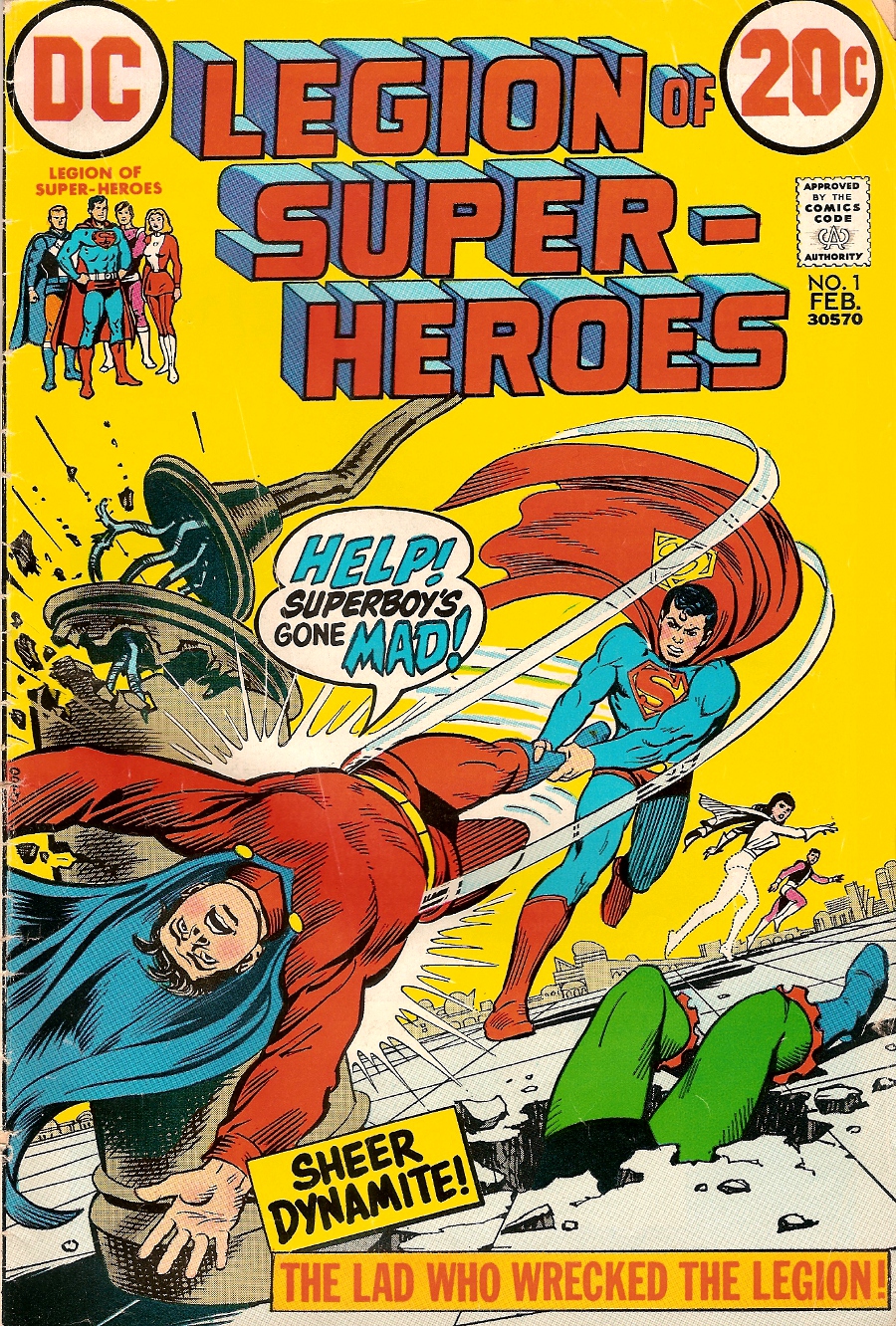 Many kids of my generation tended to choose one comics company over another. Most of my friends who read comics as kids were Marvel fans, for instance, while I avoided Marvel after my early experiences with it, until I was 12 anyway.
Many kids of my generation tended to choose one comics company over another. Most of my friends who read comics as kids were Marvel fans, for instance, while I avoided Marvel after my early experiences with it, until I was 12 anyway.
I liked DC Comics. The stories were usually more self-contained, their characters were on TV more, they had awesome covers (usually by Neal Adams or Nick Cardy, who did the cover on the right), and some of the best artists in the trade did interiors, like Adams (again), Jim Aparo, and the Swan/Anderson team.
But there were some downsides to DC, and this title, Legion of Super-Heroes, exemplifies one of them. Cover-dated February 1973, the book consisted entirely of reprints of adventures published years earlier. And the DC style in the late 50’s and early 60’s was quaint, to put it mildly.
Issue #1 of Legion of Super-Heroes reprinted “The Lad Who Wrecked the Legion,” a pretty typical Legion tale. There are no credits, but the art is pretty obviously by Jim Mooney.
The Legion of Super-Heroes was a concept I liked, although it was never developed very well. It was basically a big club of teenagers with super-powers. more diverse and weird than the Justice League (and by diverse, I mean power-wise–except for Brainiac 5 and Chameleon Kid, the Legionnaires were all white). They had more members than the League, but then again, their standards were lower. They had to be, with members like Bouncing Boy and Matter-Eater Lad.
But their stories were boring. “The Lad Who Wrecked the Legion” was typical. It opens with Superboy (who would travel into the future sometimes to have adventures with the Legion, though he could never remember them when he returned to the past) seeing a young man foil a bank robbery by scaring the robbers with mental illusions. Superboy talks to the young man, who says his name is Command Kid.
Superboy introduces Command Kid to some of the other Legionnaires, and they invite Command Kid to join while demonstrating their own powers or just standing around describing themselves.
That construction foreman is awfully happy about all the men put out of work by the three “heroes.” Then again, he’s saving payroll. Not to mention the fact that even though the park is finished, there are no employees to run it. Then again, maybe it’s a completely automated robot park. Yeah, I want to be first one through the automatic death park built by three teenagers with no construction expertise.
Command Kid joins the Legion, but his massive ego soon rubs the other Legionnaires the wrong way. And soon after, the three mightiest members of the Legion begin to argue.
Ah yes, the Fake-Out cover, depicting a hero acting completely out of character, which usually turns out to be either a ruse, an illusion, or a fantasy. This was another DC tradition, so common that it inspired a whole website.
And this is where it gets really stupid. Although Command Kid has been alienating everybody with his ego and his aversion to gold, they Legionnaires instantly believe him when he says he has a device which can enhance their powers. So even though he has provided no proof, they willingly allow themselves to be put into suspended animation.
Because the Legionnaires are stupid.
But Element Lad and Saturn Girl show up just in time to save the Legion by turning the control console to gold, which is Command Kid’s weakness. And a man who looks uncannily like William Shakespeare explains that Command Kid has been possessed by an extra-dimensional demon, and his machine was designed to possess the other Legionnaires.
But perhaps the strangest thing about the early Legion stories is that they were obviously reacting to the Marvel phenomenon, toying with things like continuity and shocking character developments, but in the gently boring DC fashion. So, for instance, Lightning Lad was once thought dead, and also lost an arm, appearing in subsequent stories with a mechanical arm.
Or this story, “The Weirdo Legionnaire”, originally published in Adventure #341 and reprinted in Legion of Super-Heroes #4. The conclusion of a two-parter published the month before, in which Brainiac 5 accidentally built a super-computer who decided to take over the world by building an army of other super-computer robots, this story features the shocking on-panel death of Triplicate Girl.
The surviving Legionnaires retreat to mourn Triplicate Girl and build a super-rocket that sucks in the disintegrated particles of Triplicate Girl and carries them off to Shanghalla, the super-hero graveyard asteroid.
Of course, they have to defuse the solemn moment by making an unfunny joke about another super-woman dying by slipping on a banana peel. Seriously, lower left. And why the hell did they kill off Hate Face without ever showing him in action?
The mourning ends completely when Triplicate Girl shows up on the next page, saying that only one of her three selves was killed, so everyone should just call her Duo Damsel now. Yay!
The Legion finally defeats Computo the Conqueror with a strange device Brainiac 5 has salvaged from the long-abandoned Bat-Cave. It summons (or creates) a mindless Anti-Matter Force-Thing, which shoots bolts of anti-matter that destroy everything they touch (and though the Legionnaires look as boring as ever in this story, Curt Swan and George Klein draw a pretty bad-ass looking Force-Thing, like an explosion with tentacles of fire). Damn, even before Frank Miller, Batman didn’t play. Brainiac 5 barely figures out how to turn the thing off before it can destroy the world.
The back-up feature was a late 50’s-early 60’s science-fiction feature starring Tommy Tomorrow of the Planeteers. Apparently written by Otto Binder and illustrated by Mooney (again), “The Riddle of the Space Rainbow” is typical 60’s DC science-fiction, except that Tommy Tomorrow was one of the least futuristic science-fiction series ever. For instance, in this story, Tommy gets roped into doing a TV special (sorry, space TV special) which revolves around his spaceship being painted different colors. Because color is a novelty on space TV, you see.
But in fact, it’s all a hoax! The number-one cop in the galaxy has been fooled into appearing on a bogus TV show by a guy with a fake mustache and a wooden camera!
And why? Because giant other-dimensional alien “space fishermen” like to grab colorful objects from our universe through a hole between our dimensions–with a net. You know, like you do.
Tommy gets captured, but manages to escape and seals the hole with an atomic hand grenade. Because you really want to trust this guy with one of those.
In other issues, Tommy defeated a gang of criminals using old Earth toys (a baseball, a kite and a squirt gun, specifically) and outwitted a band of space smugglers with a foil-lined hat after figuring out an important clue.
Yes, seriously: their odometer was off!
After four issues, the DC experiment with Legion reprints was abandoned. The question is, why did they do it in the first place? I mean, yes, the book cost practically nothing beyond having new covers drawn up plus printing, but DC had lots of titles they could reprint cheaply. Why this one in particular?
The answer next week.


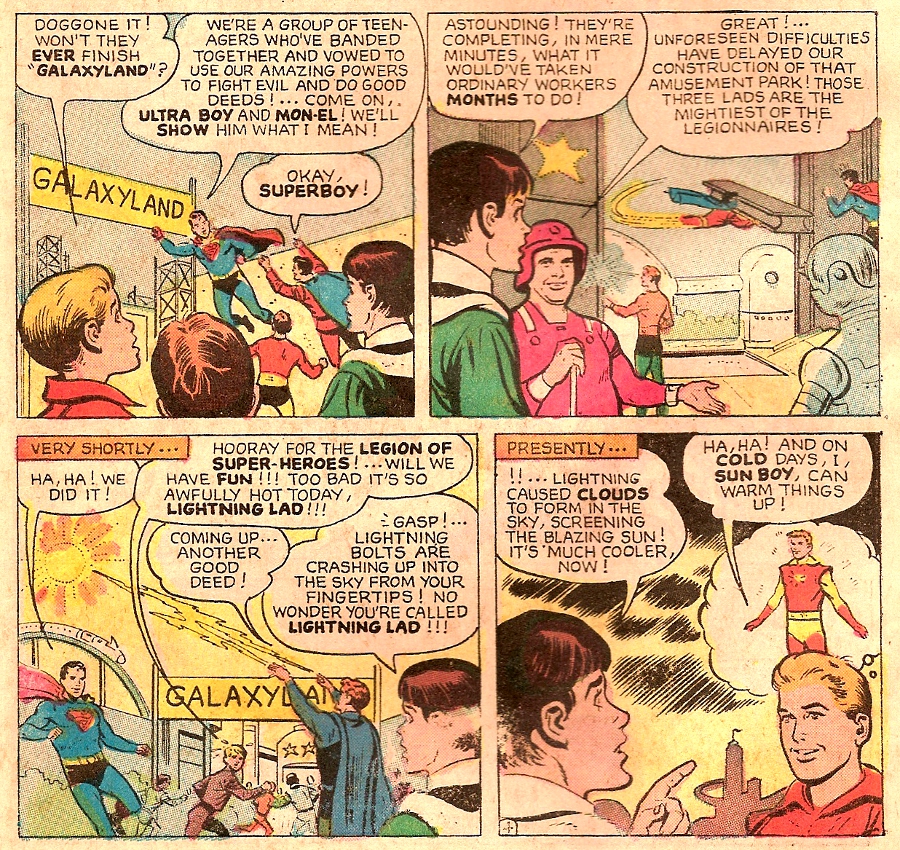
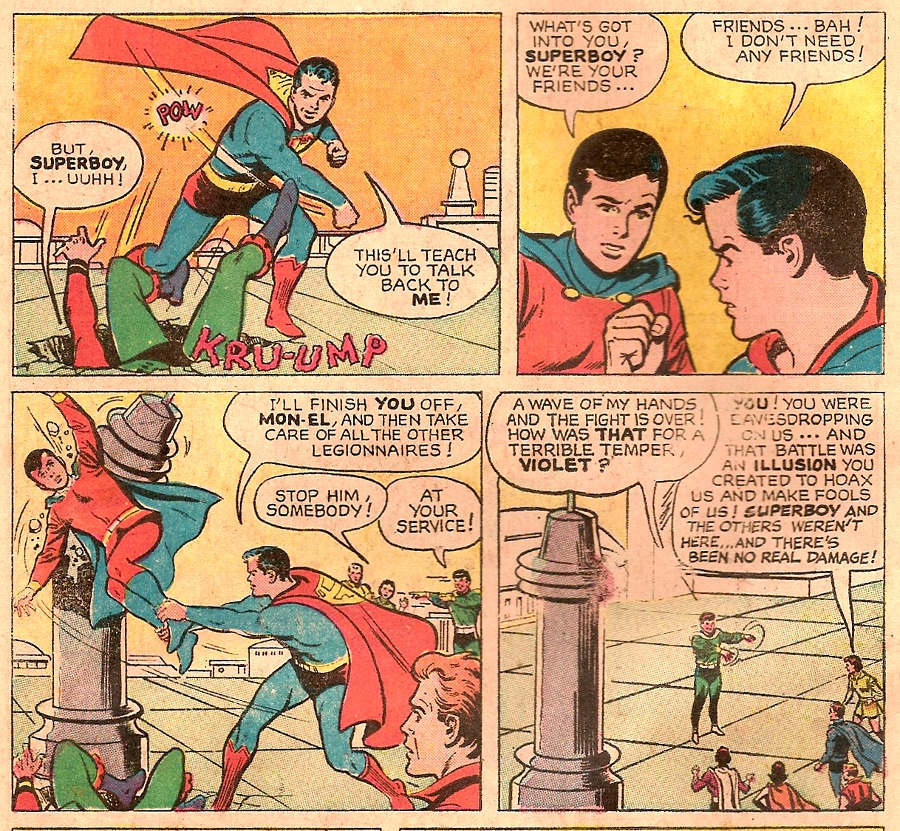
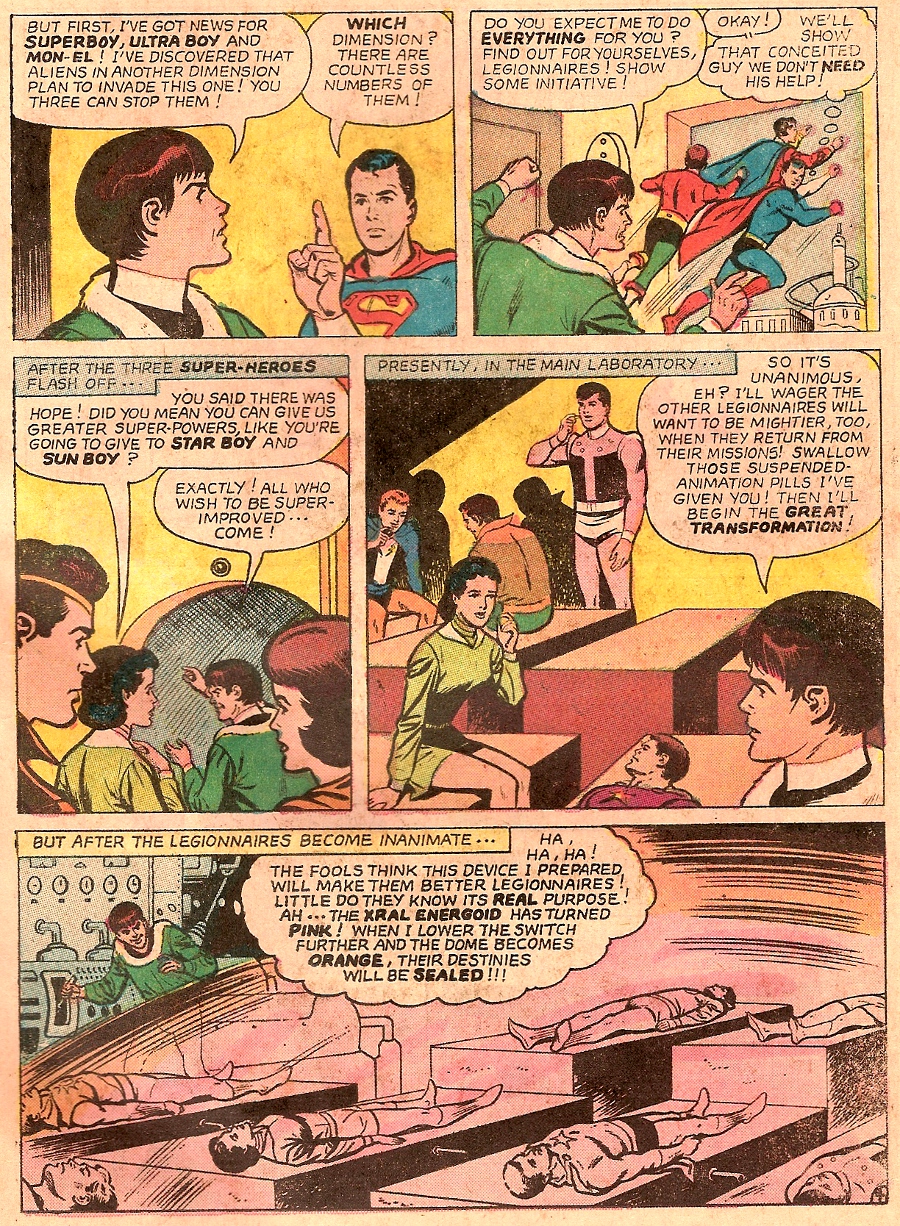
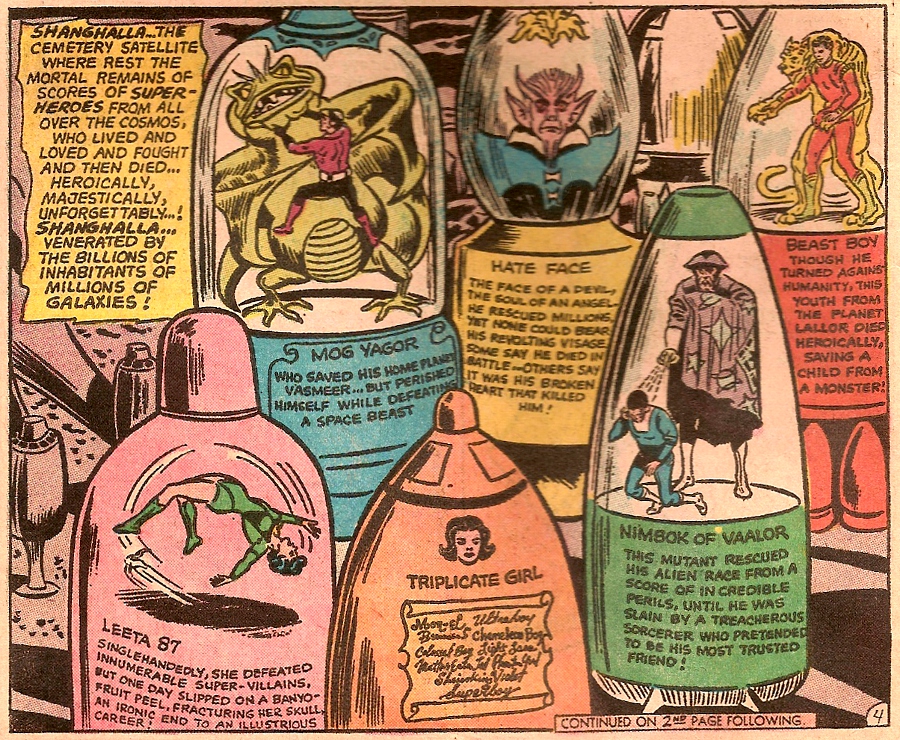
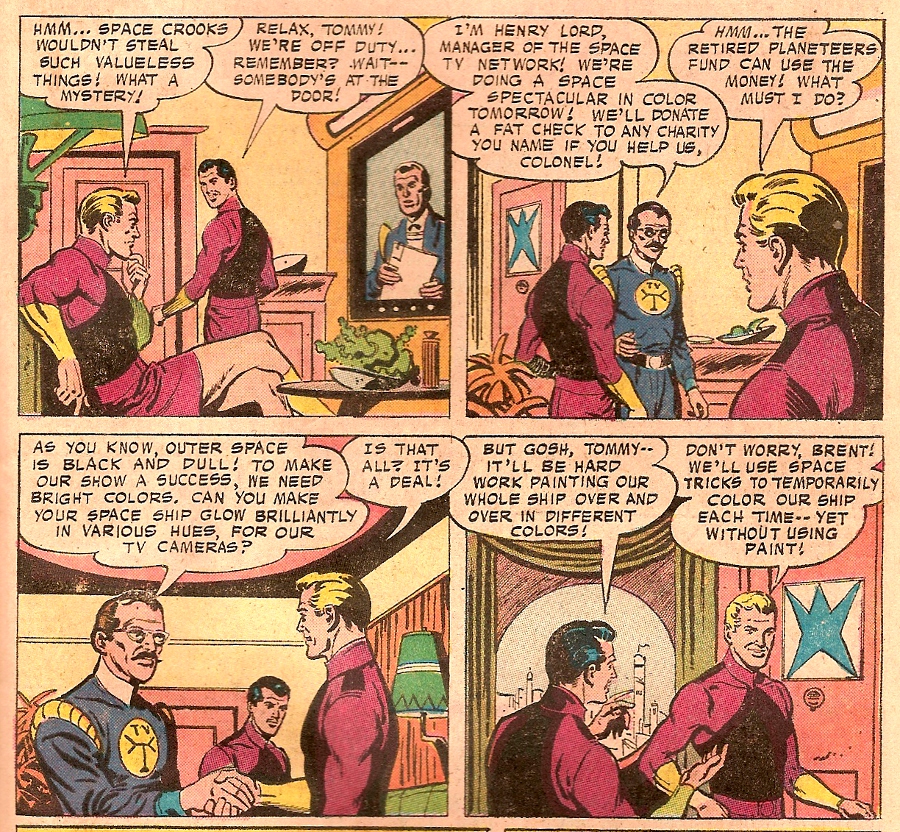
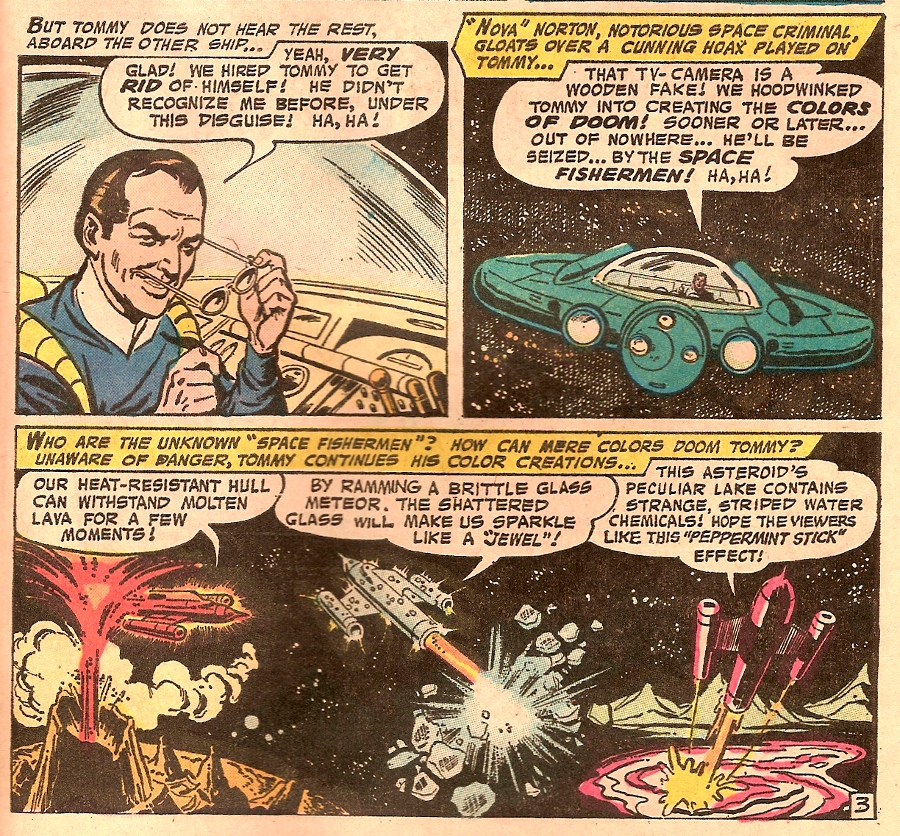
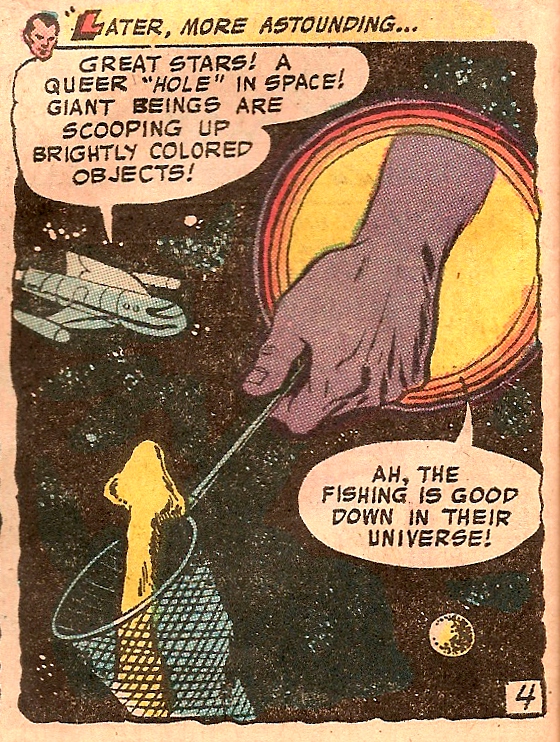
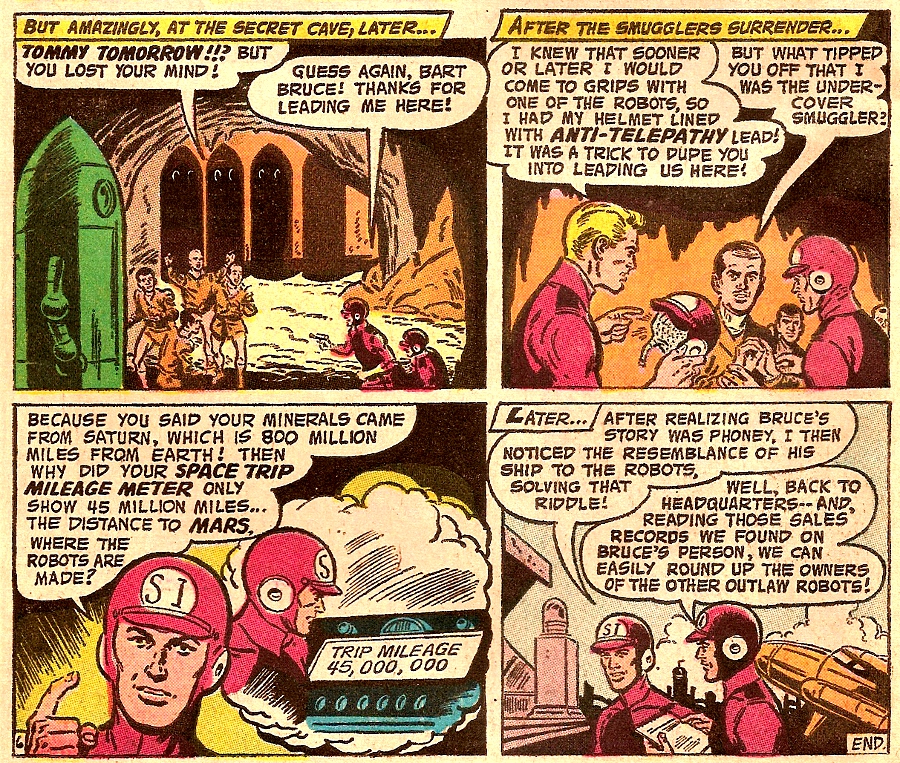



Pingback: Out of the Vault – The Inferior Five | Hero Go Home